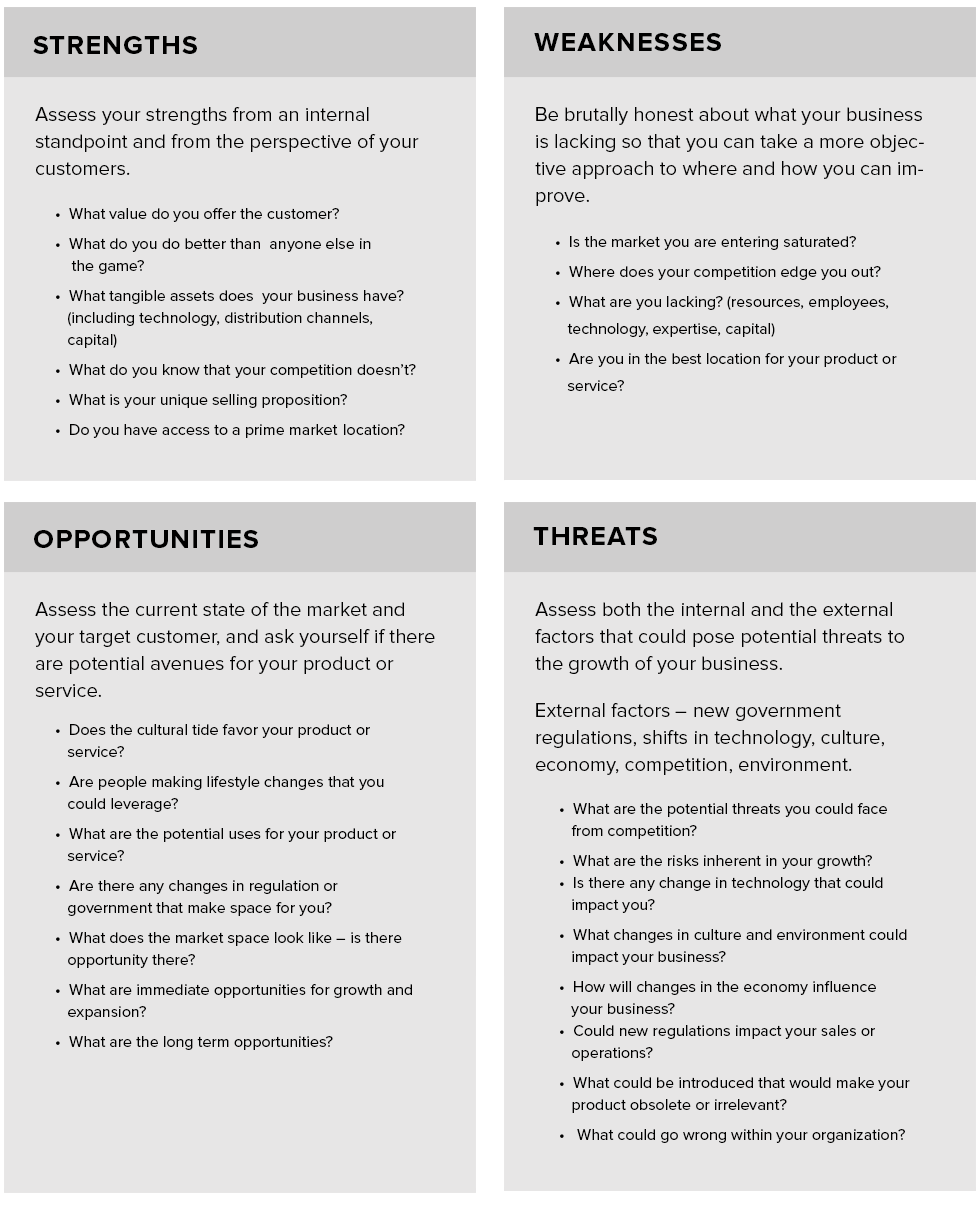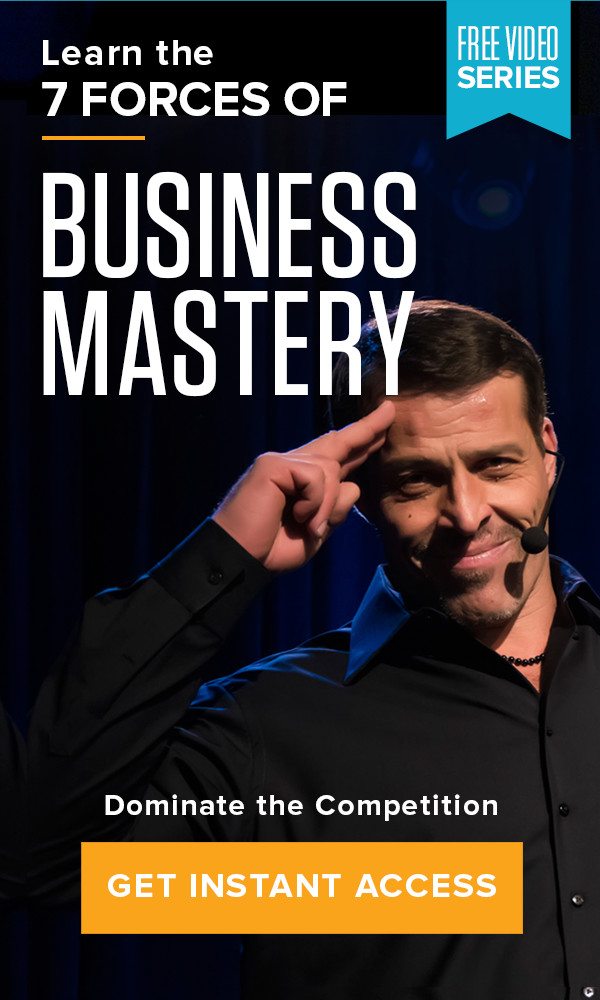Team Tony cultivates, curates and shares Tony Robbins’ stories and core principles, to help others achieve an extraordinary life.
How to create your brand identity
It’s who you are and what you value – as a company
What is brand identity? It is the single most important part of creating a brand and building a business. Your brand identity is an extension of your core values. It manifests the values, goals and mission of your business. Your brand image is the catalyst that sparks the emotions you want your customers to experience each time they have an interaction with your brand – and it will be your north star when you’re building a brand, guiding every decision you make.
Everyone can think of companies with a strong brand image: Coca-Cola, Google, Nike, Apple and other corporations come to mind. They have immediately recognizable logos and direct, catchy slogans like “Just Do It” and “Think Different.” They have memorable commercials that bring their brand identity to life and create an emotional connection with their customers. Clothing companies such as Patagonia and Brooks Brothers exemplify this kind of branding. But how do you get to that point – where do you start and what are the guidelines to this process? How do you know you are creating a brand effectively?
You may think that making your business map and figuring out your financials are the biggest milestones when you’re starting a company – but building your brand identity is equally important. How can you develop marketing materials, establish a tone of voice for your content or even hire employees without your north star? If you don’t know what your company is and what it offers the customer, you cannot target the right audience or hire your business champions. To really get to the bottom of your brand image, take a holistic approach to refining your operations and company culture.
Your brand identity reflects your company culture
Marketing guru Jay Abraham has spent his career helping business owners create solutions to increase their bottom line. What is the secret to creating a brand image that achieves long-term success and stability for your company? It’s not the ability to crunch numbers or micro-manage your staff. It’s your ability to think and act like a true leader in crafting your brand. Powerful leaders recognize that businesses (and their products) are only as strong as the company’s people. To recognize and leverage a business’ people power, great leaders adopt a mindset of respect and collaboration. What does workplace communication have to do with business branding? By weaving respect and empathy into your communication style, leaders distinguish their company as an ally worthy of people’s loyalty. This creates raving fans and faithful team members, giving you an absolute advantage over the competition.
Creating a brand image that sets you apart
Your brand image reflects your business vision, which in many ways embodies your mindset as a business owner. Jay Abraham’s Strategy of Preeminence lays the foundation for mastering your mindset to distinguish your company from the rest. This strategy entails creating a culture of respect for your team, customers and partners. To create a culture of preeminence, make allies everywhere you go so that the message is clear: “I’m here to serve you and meet your needs.”
You’re here to add real value to your customers’ lives. To create this type of relationship dynamic, show empathy to everyone you interact with, and strive to understand what they really need. With this understanding, you’re able to create meaningful relationships based on trust and respect, which weaves you into the fabric of your target market.
Catalyst SF’s John Durham on creating a brand
Tony Robbins’ own Kerry Song sat down with John Durham, CEO of brand marketing agency Catalyst SF, and asked him everything you need to know about how to build a brand.

John Durham, CEO of Catalyst SF
Kerry Song: Let’s start with the inherent importance of creating a brand identity. Why is this so critical for any business?
John Durham: This is the single most important thing you can do, outside of figuring out what your business model is. Your brand identity is a necessary component to helping your business grow. Because your business identity encapsulates what your business stands for. It’s the purpose, the mission, the look, the feel, the tone and the voice of your company. It’s the determinant of how the audience will perceive you. So many people make decisions about the name, the logo and the colors they use so casually. They are forgetting that each of these decisions should come from the brand identity. There is a science and an art to it. And without it, you will have a difficult time really building your business.
Kerry Song: So where do you start when building a brand? A lot of people have an idea of what they want their business to be, but what is the first step to creating a strong brand identity?
John Durham: You figure out that you want to be in a certain category and you know what type of business you want to establish. Now go look at what else is out there. Look at what other companies in that same category are doing. What are they saying about themselves? What is their look and feel? I always tell clients to “pictures source.” That is, go through magazines and websites and find what they like, what they enjoy and why. Are there certain color schemes? Are there certain logos or slogans? And what do you see that you dislike? This helps you start to capture the tone and feel of your business.
Now that you have the tone and the feel, start to dig a little deeper. Ask yourself what your philosophy is. What do you want your business to be? And how do you go about doing it? This will help you find your voice, and it will enable you to build a quick structure that can start to point you in the right direction towards building your business.
Kerry Song: Is it important to look at how your business sits amidst its competitors? Or do you just focus on who you are internally? How much should you let the environment and market space shape your brand image?
John Durham: We live in a world where you have to understand that there’s no original idea anymore. There are variations on cool ideas and there are variations on products and services. So you have to be cognizant of your competition. Because it’s about the nuances. And to leverage those, you must understand the competitive landscape and know what is out there. If someone is doing something, but not doing it 100% right, and there is a substantial customer base, then it becomes incumbent upon you to really point out the differentiation as to why you are doing it better – even if it is just slightly better, slightly different, and slightly smarter. But you will not be able to do that if you bury yourself and think you’re the only one. Remember, Google wasn’t first to market. In fact, there were a lot of other players in the game. Google just figured out what was missing and took it to the next level.
Kerry Song: What is the best tool business owners can use to most accurately determine where they stand in the market and then magnify their positive differentiators?
John Durham: I’m a big believer in the SWOT analysis: strengths, weaknesses, opportunities and threats. When we get hired or we get tasked, we’ll sit down and immediately and run through this process for the company. And I will do the same thing for the competitors of any product or service. Because it’s not enough just to understand your own strengths. You must know those of your competition, and then say “Let them do this well. And we’re going to do this well.”
The strengths and opportunities should be on the left, and the weaknesses and the threats on the right. And when you are finished, that left column better be bigger than the right column or you might want to question why you are doing it. But you must be honest with yourself, and also be very clear about what your competition brings to the table. This will help you determine which attributes to magnify and how to best distinguish your brand.

Kerry Song: What about core values? Is there merit in establishing those before developing your brand identity?
John Durham: Absolutely. Aside from focusing on the business model and the financials, one of the first things you need to do is establish your mission as a company. This is especially important in today’s world. People care about what they are buying. They care about products and sustainability. They care about the values that companies offer, and a lot of times they will choose their products and services based on those values. You need to write a manifesto that you can be proud of.
Kerry Song: What are your guidelines to writing an effective set of core values?
John Durham: I like the idea of narrowing it down to about four or five core values, and no more than that. It’s about two paragraphs. The first is about what you stand for. The second is how you want to make a fair profit. People are not bothered by people making money. I think we have to get over that myth. People understand that we operate a business. If you are a for-profit business, then you want to make a fair profit. You want to make sure that the products you sell are high-quality, desirable products. And you want to set standards for how your business is run.
Kerry Song: Now that we have a better understanding of how to build a brand identity, let’s move on to what it influences.
John Durham: I always tell people that when you’re starting to build a brand identity, think about your brand’s personality and find 4-5 key words that describe that. Then, use those words to find your tone, feel and voice. And use that to grow the language you use. Every brand, big or small, can carve that out if they know what their personality is and what they want that personality to convey.
Kerry Song: So if marketing, sales and design efforts should reflect your brand identity, what are some questions you can ask yourself to ensure you are doing it correctly? Many small business owners don’t have a team of experts that head up each department. Most wear multiple hats. So whether it’s everyday decisions like the types of images they post on Instagram, or bigger decisions like overall marketing strategy, how do you know you are working in a way that accurately reflects your brand identity?
John Durham: Be sure to never insult your customers. And to never underestimate their attention to detail. David Ogilvy once said, “Never underestimate the power of the American woman.” She’s the smartest customer we know. I always keep that in mind. And I always start with that point of view. Now, this doesn’t mean you have to assume the viewpoint of this individual. On the contrary; one of the best places to start is to ask yourself what you like and what you want. Some people can be so afraid of making a decision on identity because they don’t want to let their own bias or personal feelings come into play. But we often forget that we, too, are customers. And when you bring that to bear, I think people, particularly small business owners, feel a lot better because more often than not, their business is an expression of who they are as people.
Ultimately, your brand identity should be an accurate representation of what your company is about, and what you hope to achieve with it. Business branding is something that takes time, but should be considered a crucial first step in launching your company. After your branding materials are in place, you can look back on these resources for years to come to ensure you’re always staying true to your mission.
As this interview shows, creating a brand might seem straightforward, but it’s not as easy as designing a cool logo and putting it on some marketing materials. You need to live your brand identity. Today’s consumer is tired of traditional marketing, and they know when they’re being “sold” to. Some experts put the number of brands Americans see each day at between 4,000 and 10,000, from the labels on their clothing to the cars they see during their commute. It’s difficult to stand out in our fast-paced, brand-saturated world, but you can do it. Just focus your energy, follow our tips and lock down a powerful brand identity for your business.
Header Image © Uber Images / Shutterstock




